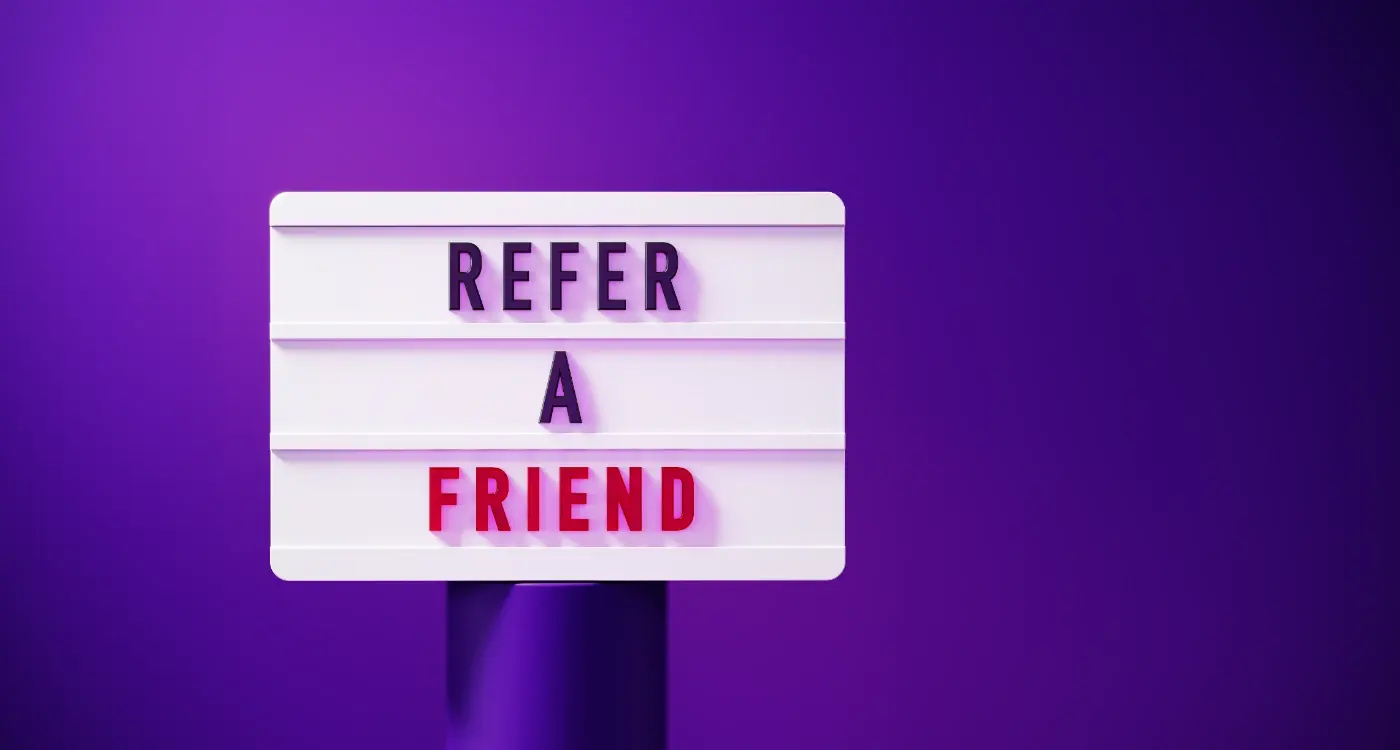How Much Should I Offer As a Referral Bonus for My App?
Only 23% of mobile app users return after their first day of use. That's a pretty stark reality that every app owner faces—getting people to download your app is just the beginning of the battle. Once you've got them, keeping them engaged and growing your user base becomes the real challenge.
This is where referral bonuses come into play. They're one of the most effective ways to turn your existing users into marketing machines for your mobile app. But here's the tricky part—offer too little and nobody bothers to refer their friends; offer too much and you'll blow your budget faster than you can say "cost per acquisition".
The best referral programmes feel like a natural extension of the app experience, not a desperate plea for growth
I've worked with dozens of app owners over the years, from bootstrapped startups to well-funded scale-ups, and the question is always the same: what's the right reward amount? The answer isn't as straightforward as you might think. It depends on your app's economics, your target audience, and what you're currently spending to acquire new users through other channels. Getting this balance right can be the difference between a referral programme that transforms your growth and one that drains your resources without delivering results.
Understanding Cost Per Acquisition For Mobile Apps
Before you can set a smart referral bonus, you need to know what it actually costs you to get a new user. This is your Cost Per Acquisition—or CPA for short. Think of it as the price tag on each new customer who downloads and uses your app.
Most app owners I work with are spending money on different ways to attract users. Maybe you're running Facebook ads, paying for Google search ads, or working with influencers. Each of these channels has a cost, and when you divide that cost by the number of users you actually gained, you get your CPA.
Why CPA Matters For Your Referral Programme
Your referral bonus should never cost more than what you're already paying through other marketing channels. If you're spending £15 to get a user through paid ads, offering a £20 referral bonus doesn't make much sense—unless those referred users are significantly better quality.
Here's what you need to track for each marketing channel:
- Total money spent on the channel
- Number of app downloads generated
- Number of users who actually engage with your app
- How much those users spend (if your app makes money)
The tricky bit is that not all users are created equal. A user who comes through a friend's recommendation often sticks around longer and spends more money than someone who clicked on a random ad. This means you might be able to justify paying slightly more for referred users, but you need the data to back that up.
What Are Referral Bonuses And How Do They Work
A referral bonus is quite simply a reward you give to existing users when they successfully bring new people to your mobile app. Think of it as paying your users to become your marketing team—they tell their friends about your app, and when those friends sign up and take a specific action, your original user gets something valuable in return.
The mechanics are straightforward but the execution needs to be spot on. When someone downloads your app, they get a unique referral code or link they can share. When their friend uses that code to sign up and completes whatever action you've defined as a 'successful referral' (could be making their first purchase, completing onboarding, or just verifying their account), both users typically receive their reward.
The Psychology Behind Why They Work
People love getting something for free, but they also want to look good to their friends. When your app is genuinely useful and the reward amount feels generous, users become genuine advocates. They're not just sharing for the bonus—they're sharing because they want their friends to benefit too.
The tricky bit is getting the reward amount right. Too low and nobody bothers sharing; too high and you'll blow your cost per acquisition budget. The sweet spot varies massively depending on your app's value proposition and target audience.
Start with a reward amount that's roughly 20-30% of your current cost per acquisition. This gives you room to test whilst keeping your budget sensible.
Finding The Right Reward Amount For Your App
Getting your reward amount right is probably the trickiest part of setting up a referral programme. Too little and nobody bothers sharing your app—too much and you'll burn through your budget faster than you can say "acquisition costs". I've seen plenty of app owners get this wrong, and it's painful to watch.
The sweet spot sits somewhere between what feels generous to your users and what makes financial sense for your business. Most successful apps I've worked with offer rewards that represent 10-30% of their customer lifetime value. So if each user is worth £50 to your business over time, you might offer a £5-15 reward.
Key Factors That Influence Your Reward Amount
- Your app's price point or revenue per user
- How much competitors are offering (check their programmes)
- The effort required from users to share your app
- Your target audience's income level and motivations
- Whether you're offering cash, credits, or premium features
Start conservative and test your way up. You can always increase rewards if uptake is low, but reducing them later feels mean to existing users. I'd rather see you launch with a smaller reward that works than overspend on one that doesn't.
Calculating Your Maximum Referral Budget
Working out your maximum referral budget isn't rocket science, but it does require some honest number-crunching. The golden rule? Never spend more on acquiring a customer through referrals than they'll bring back in revenue. I've seen too many app owners get excited about growth and forget this basic principle—it's a fast track to burning through your marketing budget.
Start with your customer lifetime value (CLV). If each user brings in £50 over their lifetime with your mobile app, then your cost per acquisition should stay well below that figure. Most successful apps I've worked with keep their referral costs at around 20-30% of CLV. This gives you breathing room for other costs and ensures profitability.
The 50/50 Split Method
A popular approach is splitting your reward amount between the referrer and new user. If your maximum spend per acquisition is £15, you might offer £7.50 to each party. This creates motivation on both sides whilst keeping costs controlled.
The biggest mistake I see is apps offering rewards that sound impressive but eat into profits so heavily that growth becomes unsustainable
Don't forget to factor in processing fees, programme management costs, and fraud prevention. These hidden expenses can quickly push your real cost per acquisition higher than planned. Build in a 10-15% buffer for these extras when calculating your maximum budget.
Different Types Of Referral Rewards That Actually Work
After years of working with apps across different industries, I've noticed that the most successful referral programmes don't just throw money at users—they get creative with their rewards. The best approach depends entirely on what your app does and who uses it.
Cash rewards are the obvious choice, but they're not always the most effective. A fitness app might offer free premium months instead of £5; a food delivery service could give restaurant credits rather than straight cash. The key is matching your reward to what users actually want from your app.
Service Credits vs Cash Rewards
Service credits often work better than cash because they keep users engaged with your app longer. When someone receives £10 credit for your rideshare app, they're likely to use it within your platform rather than spending cash elsewhere. This creates more touchpoints and opportunities for habit formation.
Tiered and Progressive Rewards
Some of the most successful programmes I've seen use progressive rewards—the more people you refer, the better your rewards become. Start with something modest for the first referral, then increase the value for subsequent ones. This approach turns casual referrers into genuine advocates who actively promote your app.
The most important thing to remember is that your reward should feel valuable to your specific audience. A premium feature unlock might be worth more to your users than actual money—test different approaches and let the data guide your decisions.
Testing And Measuring Your Referral Programme Success
Once your referral programme is live, the real work begins—tracking how well it's performing. You can't just set up your reward amount and hope for the best; you need proper data to understand what's working and what isn't.
Start by monitoring your key metrics weekly, not daily. Daily fluctuations can be misleading and cause unnecessary panic. The numbers you should be watching are straightforward: how many people are referring others, how many of those referrals actually download your mobile app, and most importantly, how many become paying users.
Key Metrics to Track
- Referral conversion rate (referrals to downloads)
- Cost per acquisition through referrals vs other channels
- Lifetime value of referred users
- Time between referral and first purchase
- Share rate (how often people use your referral feature)
Set up automated reports that arrive in your inbox weekly rather than checking manually—this saves time and creates consistent monitoring habits.
The most telling metric is comparing your referral cost per acquisition against paid advertising channels. If your reward amount is working properly, referred users should cost less to acquire than paid users whilst having similar or higher lifetime values. When this balance shifts, it's time to adjust your reward structure.
Conclusion
Getting your referral bonus right isn't rocket science, but it does require some proper thinking and a bit of maths. After working with dozens of businesses on their referral programmes, I can tell you that the ones who succeed are those who take the time to understand their numbers first—their customer acquisition cost, their lifetime value, and what they can actually afford to give away.
The sweet spot for most apps sits somewhere between 10-30% of your customer lifetime value, but that's just a starting point. What matters more is testing different amounts and seeing what actually moves the needle for your specific audience. I've seen apps succeed with £5 rewards and others need £50 to get people excited.
Don't forget that your referral programme is a marathon, not a sprint. Start with something modest, measure everything you can, and adjust based on real data rather than gut feelings. The businesses that treat their referral programmes as ongoing experiments rather than set-and-forget systems are the ones that see the best results.
Most importantly, make sure your app is actually worth referring before you worry about how much to pay people. The best referral bonus in the world won't save a rubbish product, but a great product with a decent referral system can be absolutely transformative for your growth.
Share this
Subscribe To Our Learning Centre
You May Also Like
These Related Guides

What Metrics Should I Track To Measure App Success?

How Long Should My App Referral Program Run?



